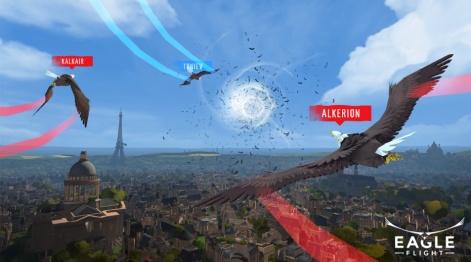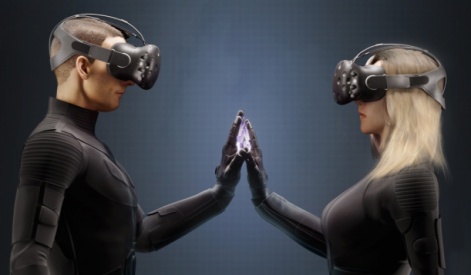We ask our industry panel - the brightest and sharpest VR professionals from around the world - one question about the VR industry, business, technology or trending stories every week.
Question: As an early solution to motion sickness in VR, blinking - or teleporting - has proven effective, but are developers catering to the lowest common denominator if they fail to also provide a more ‘analogue’ locomotion system for users that don’t suffer this problem?
We still have a hard time understanding what our normal or average customers want.Wendelin Reich
Wendelin Reich PhD, Founder and CEO at Virtual Beings
“The VR industry is only just waking up to the fact that its audience is diverse. To some extent, this might be forgivable as we still have an extremely hard time understanding what our 'normal' or 'average' customers want. But it's also a clear reminder of just how far we have to go to become more mature and professional.
“Locomotion really reflects this problem. The most recent trend - very visible at VR Connects London - has been to roll out allegedly fancy locomotion systems that alleviate nausea. An example would be Ubisoft's Eagle Flight for PS VR, which uses field-of-view narrowing for this purpose. Unfortunately, neither this nor any other 'analogue' locomotion solution works for everyone, as I can attest personally - I learned after 10 minutes that I had wasted 40€ on a game I couldn't play.
“But there's probably no way Ubisoft could have created a flying game that would have been playable for nausea-sensitive people like myself. And that's the underlying dilemma: locomotion modes aren't always switchable. How you move around affects what you can do in a game, and few game mechanics are more basic than moving around in first or third person. I just hope that VR devs continue to search for (sometimes optional) solutions that make their games as inclusive as possible. People are diverse - and not just with respect to their predisposition for nausea!”

A developer shouldn’t be looked down on for saying they want as many players as possible.Daniel Kihlgren Kallander
Daniel Kihlgren Kallander, Game designer and programmer at SVRVIVE Studios
“There are many ways to look at this; more than I can fit into this one answer. First and foremost, a developer shouldn’t be looked down on for saying ‘I want as many players as possible to play my game without getting sick’ - and blinking/teleportation is the current go-to solution for that.
“We’re in a small market and for content to keep coming, the developers entering the field need to survive financially and that often means making a game more people can play.
“Beyond that though, is it bad when it’s treated as a fallback without any thought? Of course! But that’s the fault of bad game design as a whole - the locomotion system used isn’t responsible for whether it’s badly implemented or not. That, however, goes both ways; An ‘unconventional’ locomotion system can be incredibly effective in certain games, but they’d be terrible in others just the same.”
Gamers should be given the choice of free movement.Jonathan Wagstaff
Jonathan Wagstaff, Country Manager - UK & IE at CONTEXT
"Criterion's feedback on their development of Rogue One: X-Wing Mission that a large portion of their time was spent managing motion sickness was a welcome admission.
“In a recent conversation with a major studio at an industry event, I was told in no uncertain terms that teleportation was absolutely necessary and that no solution to motion sickness for first-person VR games existed; Criterion's achievement shows this to not be the case.
“It’s a huge problem and the kind of issue which arises when a revolutionary new technology emerges, but such tough work has to be done early on to improve quality of future titles. Ubisoft found a way to manage the sickness extremely well in Eagle Flight through adaptive peripheral vision, so we are seeing ways forward.
“It's also clear that some users aren't affected by nausea and want the option for traditional controls - just look at the recent patch for Robo Recall. In the case of flight simulators like War Thunder, I would argue that nausea adds to the realism of aerobatics. Whilst developers come up with solutions, gamers should at least be given the choice of free movement."

Alexandre Tomic, Co-Founder at SlotsMillion
“As we know, the most important aspect of VR is ‘immersivity’. Creating and maintaining an immersive environment involves every single one of the senses: sight, sound, temperature - even smell. Obviously VR hasn’t reached that level yet - though there are companies working on equipment to improve this - but we’re doing what we can with current technology to create environments that are as immersive as possible.
“That, alongside sight and sound, begins with comfort. The concept of ‘blinking’ to move was created to avoid users becoming nauseous during play and despite the fact that teleporting this way makes it difficult to create a mental idea of the world around you, it is a comfortable way to move.
“Immersivity, and the comfort necessary to maintain it, should be developers’ highest priority. Not every player suffers from VR-triggered motion sickness, but as long as it remains a problem for some, it needs to be resolved. Only then will we be able to move onto creating fully immersive experiences for every player.”

There is a rapidly growing disdain for teleportation systems.David Gattig
David Gattig, CEO & Co-Founder at Avrlon
“From a business point of view, it makes the most sense to follow the strategy that will maximise the target audience for your product. Taking into consideration the currently small TAM for VR, developers should create experiences with a locomotion system that the majority of users can enjoy. You should not pander to a very niche audience in the already niche VR market.
“At the same time, we have to move forward. There is a rapidly growing disdain for teleportation systems in the VR community. Seeing that most indie developers are short both on cash and time, the big studios should take the lead and research and invest in novel locomotion experiences. This will benefit VR as a whole and help all stakeholders in this industry alike.”













